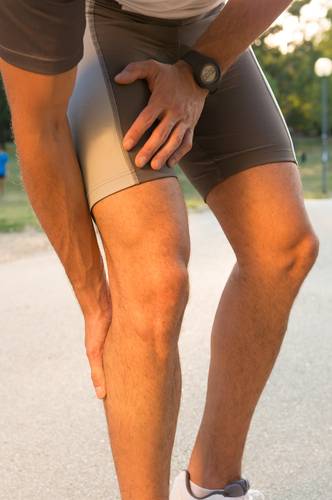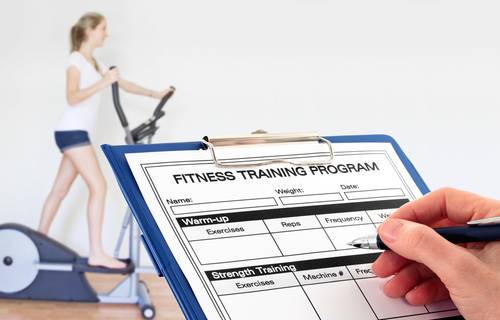After the tentative walk down the stairs leaving the gym after a leg session, we’ve all experienced the love/hate cycle of performing basic tasks the day after, or even the day after the day after leg day:
- Gets out of bed: “Ow, my legs. Yeah, good squat session yesterday!”
- Puts on pants: “Ahh, yep, okay, those deadlifts really did the trick!”
- Sits on toilet: “Maybe I can I just hold off. Stupid Romanian deadlifts!”
- Drops keys: “Oh, bloody lunges!”
This is the classic delayed onset muscle soreness (DOMS), which tends to kick in from as soon as six to eight hours post-exercise, and peaks around the 48 hour mark, though there is much individual variation of this timeline. And while lower body soreness tends to be more inhibiting and memorable, the phenomenon certainly isn’t limited to the legs. DOMS can occur anywhere in the body that has recently been exposed to unfamiliar or intense physical activity.
Despite the inconvenience of a significant bout of DOMS, a commonly held belief among trainees is that this soreness translates to progress, a job well done, and your ticket to inevitable Gainz™. But is this correct? Is there any evidence to support the idea that muscle soreness serves as a valid indicator of muscle hypertrophy?
A recent article by Brad Schoenfeld and Bret Contreras from the Strength and Conditioning Journal examined exactly this idea.1 So first let’s review their findings, and then I’ll give you something practical to take away.
What Causes DOMS?
The archaic theory for the mechanism of DOMS being a build-up of lactic acid and toxic metabolic waste products has largely been rejected. So first of all, let’s just take that one of the table, and move on.
While “the exact mechanisms are not well understood” the paper by Schoenfeld and Contreras explained, “DOMS appears to be a product of inflammation caused by microscopic tears in the connective tissue elements that sensitize nociceptors and thereby heighten the sensations of pain.” From there the article goes deep into the biochemistry describing noxious chemicals and different nerve afferents, the likes of which I’m sure you really needn’t concern yourself with if your goal is simply to find out how DOMS relates to your goal of getting fitter, stronger, healthier, and looking better naked.
To summarize, let’s just say DOMS appears to occur due to connective tissue microtrauma. It’s also worth mentioning that while most exercise can induce some DOMS, exercise with a greater emphasis on the eccentric phase (the lengthening or stretching phase) plays the most significant role in the manifestation of DOMS.
Does Getting DOMS Mean I’ll Build More Muscle?
Quick answer: No. Though it may enhance it, to an extent.
Longer answer: This really begs a different question of what does in fact cause hypertrophy, which leads us to another paper by Schoenfeld, The Mechanisms for Muscle Hypertrophy, and Their Application to Resistance Training.2 Here’s the super quick summary to that one:
The three key mechanisms for hypertrophy are:
- Mechanical tension
- Metabolic stress
- Muscle damage
 For the purpose of our discussion on DOMS, we’re most interested in number three, muscle damage, as there is a strong correlation between DOMS and exercise-induced muscle damage. And for brevity’s sake, I’m going to drastically oversimplify this explanation: muscle damage is a contributing factor to muscle hypertrophy, though not a necessary one (hypertrophy can still occur without it, via mechanisms one and two). However, there is a point of diminishing returns, and extreme muscle soreness can be counterproductive. First, severe soreness can significantly decrease force-producing capacity, which will be detrimental to performance in subsequent workouts. Second, motivation levels can take a hit when you’re hindered by crippling muscle soreness. Neither of these will be beneficial for your long-term muscle building prospects.
For the purpose of our discussion on DOMS, we’re most interested in number three, muscle damage, as there is a strong correlation between DOMS and exercise-induced muscle damage. And for brevity’s sake, I’m going to drastically oversimplify this explanation: muscle damage is a contributing factor to muscle hypertrophy, though not a necessary one (hypertrophy can still occur without it, via mechanisms one and two). However, there is a point of diminishing returns, and extreme muscle soreness can be counterproductive. First, severe soreness can significantly decrease force-producing capacity, which will be detrimental to performance in subsequent workouts. Second, motivation levels can take a hit when you’re hindered by crippling muscle soreness. Neither of these will be beneficial for your long-term muscle building prospects.
Now, I can already hear the sadists protesting that they’re well accustomed to DOMS from training and that it won’t affect their motivation to train. That may be all well and good, but let’s just be clear that this isn’t a case of if you can handle it, then more will be better. On whether or not there is a causal link between DOMS and muscle hypertrophy, the authors go on “…it remains debatable as to whether DOMS is an accurate gauge of muscle damage.”
So while you may think that getting sore from training means you get to tick that muscle damage box, DOMS might not necessarily be an accurate indicator of muscle damage anyway. As Schoenfeld and Contreras wrote, “So although DOMS may provide a general indication that some degree of damage to muscle tissue has occurred, it cannot be used as a definitive measure of the phenomenon.” So no, you don’t need to experience muscle soreness after a training session to build muscle, and you probably shouldn’t rely on it as an accurate indicator of productiveness.
Practical Applications
Now let’s take a fairly standard training template for an intermediate trainee hitting the gym four times per week on an upper/lower body split, who wants to get bigger and stronger, and move, feel, and look better. Here’s how I look at the program (assuming an appropriate warm up prior, most likely consisting of some foam rolling, mobility drills, and light activation and movement patterns, of course).
We’ll take the lower body session for our example:
1A) Trap Bar Deadlift – 3 x 5; 1 x 10
Why: Our major strength exercise.
Mechanical tension: Very high.
Metabolic stress: Moderate. More in the final high rep set.
Muscle damage and DOMS: High. There’s a significant eccentric stress.
1B) Half Kneeling Pallof Press – 3 x 6/side
Why: Anti-rotation core work.
Mechanical tension: Low
Metabolic stress: Low
Muscle damage and DOMS: Low
2A) DB Reverse Lunge from a Deficit – 3 x 10/side
Why: Our secondary lower body exercise, a single leg variation.
Mechanical tension: Moderate.
Metabolic stress: High.
Muscle damage and DOMS: Very high. Especially thanks to the extra ROM from the deficit.
2B) Fit Ball Roll Out – 3 x 10
Why: Anti-extension core work.
Mechanical tension: Moderate
Metabolic stress: Low-moderate.
Muscle damage and DOMS: High, due to the eccentric stress on the abdominals. The first time performing these – correctly – can render laughing, coughing, and sneezing very uncomfortable.
Leg Superset:
3A) Single Leg RDL – 3 x 8/side
3B) Single Leg Hip Thrust – 3 x 12/side
3C) Goblet Squat – 3 x 12
Rest 60 seconds back to 3A
Why: A high volume leg finisher.
Mechanical tension: Low.
Metabolic stress: Very high (high volume and short rest periods).
Muscle damage and DOMS: Respectively, high, low and moderate. Net result: you’ll probably be sore. The SLRDL in particular is the culprit for many tender hamstrings for days afterwards, thanks to its significant eccentric stress.
Wrapping Up
 Hopefully that provides a simple overview of what DOMS is and its role in muscle hypertrophy, and serves as a practical example of how to consider its effects – both positive and negative – when designing a training program for yourself or for your clients.
Hopefully that provides a simple overview of what DOMS is and its role in muscle hypertrophy, and serves as a practical example of how to consider its effects – both positive and negative – when designing a training program for yourself or for your clients.
(Author’s note: Please recognize that the content in the first portion of this article was essentially a short commentary on the articles mentioned and linked below. For a better understanding and a full list of references I highly encourage you to check out the original articles by Brad Schoenfeld and Bret Contreras.)
References:
1. Brad J. Schoenfeld and Bret Contreras, “Is Postexercise Muscle Soreness a Valid Indicator of Muscular Adaptations?” Strength and Conditioning Journal, vol. 35 No. 5 pp. 16-21 (2013)
2. Brad J. Schoenfeld “The Mechanisms for Muscle Hypertrophy, and Their Application to Resistance Training” Journal of Strength and Conditioning Research, vol. 24(10) (2010)
Photo 1 courtesy of CrossFit Impulse.
Photos 2 & 3 courtesy of Shutterstock.






